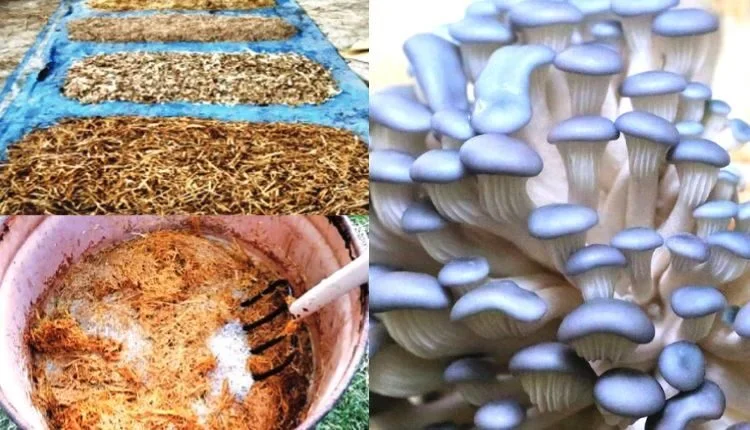Blue Oyster Mushroom: Know the Simple Way to cultivate Blue Oyster Mushroom and the Cost-Profit arithmetic
This mushroom is rich in medicinal properties
The demand for mushroom is increasing day by day due to its rich nutritional properties. This has provided a good source of additional income to the farmers at low cost. A new variety of mushroom is the Blue Oyster mushroom which can be grown easily and earn good profit with very low cost.
The productivity and quality of blue oyster mushroom is higher than that of other oyster mushrooms. Its commercial cultivation is mostly done in Asia and European countries. The scientific name of Blue Oyster Mushroom is Hypsizygus ulmarius. It is also called elm oyster. It is similar to oyster mushroom in appearance, but its properties and characteristics are completely different from it.
This mushroom is known for its medicinal properties. Along with increasing immunity, it has been considered effective in controlling high blood pressure, diabetes, cholesterol etc. It contains good amount of protein, carbohydrate, fat, fibre. Not only is it attractive to look at, but it also tastes great.

Blue Oyster Mushroom Production is Simple
One of the advantages of mushroom cultivation is that it makes proper use of the waste generated from farming. Blue oyster mushroom can be easily grown by small and marginal farmers as it does not cost much to grow and does not require any special technology. It is produced by simple and very low cost technical method.
It can be easily grown on agricultural wastes like soybean bagasse, wheat straw, paddy straw, maize stalk, tur, sesame, millet, sugarcane bagasse, mustard straw, paper waste, cardboard, wood sawdust .

How to Produce Blue Oyster Mushroom?
Whatever material is being used for growing mushroom, such as straw or corn stalk, is first cut into small pieces and soaked in water to retain 75-90 percent moisture in it. It is then treated with a solution of formalin (0.5 percent) and carbendazim (0.075 percent) and kept for about 18 hours. After that the straw is taken out and spread on a plastic seat or clean wire mesh and kept to drain out the excess water.
Also Read: Geranium Cultivation: The cost of this new technology is reduced, yield gets ready fast
Then the straw is filled in polythene bags and sowing (spawning) is done. After this the mouth of the bag is tied with a nylon rope. 10-15 holes are made in the bag. The bags are kept in the mushroom house, where temperature should be 20-30 degree celsius. Remember that the moisture level in the bag must be maintained at 70-80%. These mushrooms are usually in clusters and have a pale blue color, which turns white as they mature.

In how many days is the Blue Oyster Mushroom ready?
After 15-17 days in a plastic bag, the fungal trap is completely spread. The plastic bag is then removed and betel sprayed to retain moisture. Pinheads appear around the bag 3-5 days after the bag is removed. Mushrooms are ready for harvesting after 23-24 days. It can be broken and kept in the fridge for 3-4 days. 30-40 mushrooms are obtained from a 2 kg plastic bag.

What is the profit in Blue Oyster Mushroom Cultivation?
The specialty of the Blue Oyster mushroom is that it grows easily on any kind of agricultural residue. Hence the cost is very less. It costs 20-25 rupees to prepare a bag of two kg and about 1-1.5 kg of mushrooms are obtained from it. Its price remains around Rs 150-200 per kg. In this way a profit of up to Rs 130-175 can be earned on one kilogram.
This is a good way to get additional income for the farmers. Farmers can earn good profit from this without much hard work and expenditure, as well as nutrition to the family.
Contact us: If farmers want to share information or experiences related to farming with us, then they can do this by calling us on the phone number 9599273766 or by writing an email to [email protected] or by sending your recording. Through Kisan of India, we will convey your message to the people, because we believe that if the farmers are advanced then the country is happy.



